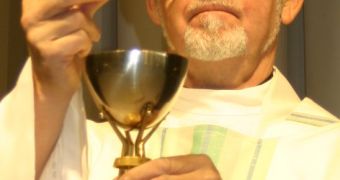Are you a good Christian? Then you should know how the hosts for the Holly Communion are made.
The wafers are made with unleavened paste, without yeast, just like Jesus Christ ate during the Last Dinner.
The recipe is very simple: water and a mixture of different wheat flours. One of them, rich in gluten, is what gives the host its corky texture. After achieving the paste, it is extended and warmed between two baking sheets at 170?C, operation that eases the evaporation of the liquid residuals. This way, thin plates of dry bread are obtained. The plates are piled up and moistened.
Finally, the hosts are cut with a special knife and are left to air out during about 6 days, before being packed and delivered. Inside the Roman Catholic Church, hosts are usually made by the nuns. The same church states that when the words of consecration are vowed the bread is turned into the Body of Christ through transubstantiation. "Host" comes from the Latin "hostia" ("victim" or "sacrificial animal").
The General Instruction of the Roman Missal, 321 recommends "that the eucharistic bread ... be made in such a way that the priest at Mass with a congregation is able in practice to break it into parts for distribution to at least some of the faithful. ... The action of the fraction or breaking of bread, which gave its name to the Eucharist in apostolic times, will bring out more clearly the force and importance of the sign of unity of all in the one bread, and of the sign of charity by the fact that the one bread is distributed among the brothers and sisters."
The Orthodox Churches and Eastern Rite Catholic Churches use leavened bread, except for the Armenian Apostolic Church, the Armenian Catholic Church, the Syro-Malabar Church and Maronite Church, which were greatly influenced by the Catholic Church.
Some churches prohibit the use of spiced, flavored or sweetened hosts, but universally, the hosts are made of wheat.

 14 DAY TRIAL //
14 DAY TRIAL //